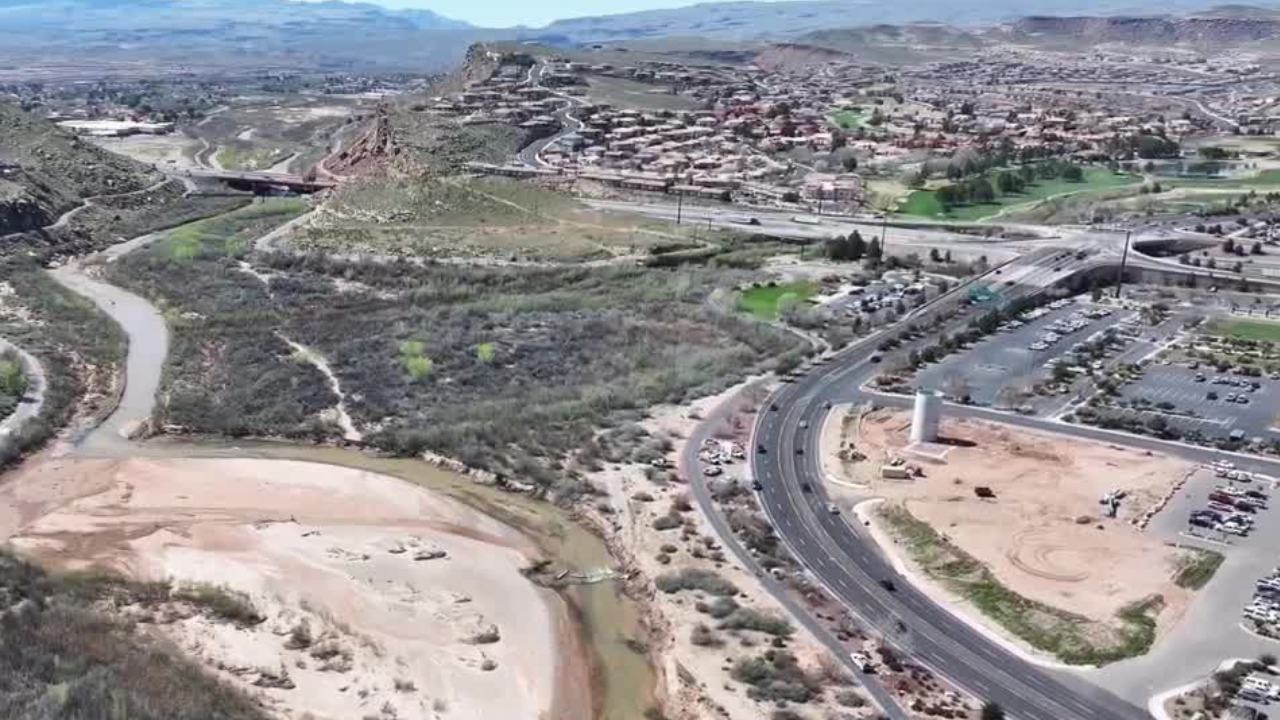ST. GEORGE, Utah — Water managers in this desert community are looking to make some big policy shifts in an effort to stretch resources a little further.
Zach Renstrom, the general manager of the Washington County Water Conservancy District, told FOX 13 News his agency is looking to expand water reuse in the area served by the Virgin and Santa Clara rivers, tributaries of the Colorado River.
"We’ve actually been doing it somewhat for the last 20 years, so we’re just going to be more aggressive," he said.
Water re-use simply takes wastewater and purifies it, then uses it elsewhere. Renstrom said a majority of that recycled water would be used outside for landscaping or agricultural use. Other communities have done this as well. For example, Las Vegas is a community that has leaned heavily into it.
"This is just one of the items that we’re looking at. We’re also diving extensively into conservation," Renstrom said.
Video below shows how water conversation is actually a selling point for some Utah communities:
But proof that what works in one part of the state does not work in all parts of the state? While water reuse is considered a beneficial use in parts of southern Utah, it is not considered a good idea in the Great Salt Lake Basin.
"In the Great Salt Lake Basin? We have a unique problem where a lot of the flow in say, the Jordan River, is actually a lot water that’s already come through a treatment facility and then comes back into the Jordan River and then flows to the Great Salt Lake," said Brian Steed, the state's Great Salt Lake Commissioner appointed by political leaders to help save the lake.
"If we were to recycle or reuse that water? We actually lose that water coming into the Great Salt Lake. That’s something we’re concerned about."
The Great Salt Lake has dropped to historic lows in recent years as a result of drought and diversion. As a terminal basin, depleting water going into it is viewed by environmentalists and policymakers as doing the opposite of what would help the lake recover. While there is water re-use along the Wasatch Front, Utah lawmakers in recent years have restricted more reuse proposals in the Great Salt Lake Basin as they work to reverse the lake's declines.
"The Great Salt Lake’s really unique that way. Where on the Colorado River system, of course, we want to recycle that water we’ve got," Steed said.
Washington County, one of the fastest growing areas in the United States, has tried to stretch its water resources a little more by pushing elimination of nonfunctional turf. Communities have passed some strict landscaping ordinances and developers now proudly advertise their low-water use landscaping.
"I don’t have to mow anything. Not really missing the lawn," said Bryce Bauer, who moved to the new master-planned community of Desert Color in St. George a few years ago for pickleball and warmer weather.
Desert Color and Solente, another massive development in southern Utah, advertise low-water landscaping and have invested in water reuse systems. At Desert Color, a development that will ultimately have 11,000 residential units on 3,400 acres of land on the Utah-Arizona border, they have even created a beach and lagoon with recycled water.
"It's higher upfront costs for us but less long-term costs for the owners, right? And the residents that are going to be here for generations," said Daniel Lemich, Desert Color's general manager.
Solente will be a 570-acre community in Washington City that will encompass 2,200 residential units and LocalScape certification.
Bauer said he doesn't mind using recycled water.
"It doesn't bother me," he said. "I know we've had water before in other places that kind of smelled weird because it was secondary water, but I haven't noticed that."
Renstrom told FOX 13 News the Washington County Water Conservancy District is looking to expand its landscaping initiatives to be "ultra efficient."
"Right now our homes are the best in the state, but we’re talking to some developers and they’ve been very positive about saying can we go to another level," he said.
On Utah's Capitol Hill, lawmakers are exploring reworking how Utahns pay for water. A recent state study recommended keeping property taxes (which cover infrastructure projects and a large part of residential water bills) while exploring a "tiered rate" system that charges people based on how much they use.
Renstrom told FOX 13 News his agency is open to that as well.
"We’re looking more at the tier so that the first allotment of water would be fairly cheap but then it would ramp up very, very quickly," he said. "It’s one of those things that if you’re using water very wisely and are a good steward? Your water bill would be very reasonable. Probably about the cost of a cell phone bill. But if you abuse the system, you could have a bill in the thousands of dollars."
This article is published through the Colorado River Collaborative, a solutions journalism initiative supported by the Janet Quinney Lawson Institute for Land, Water, and Air at Utah State University. See all of our stories about how Utahns are impacted by the Colorado River at greatsaltlakenews.org/coloradoriver



